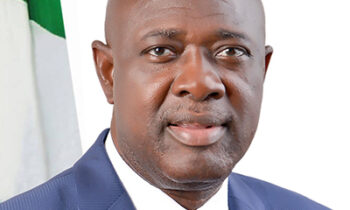
OPEC pumped 26.03 million barrels per day (bpd) of oil in June—up by 590,000 bpd from May, the cartel said on Thursday as it predicts demand for its crude at 27.7 million bpd this year, suggesting that the market would need more OPEC oil.
In its closely watched Monthly Oil Market Report—especially after the rift between the key OPEC members Saudi Arabia and the UAE—the organization said that crude oil output rose mainly in Saudi Arabia, the UAE, Angola, Iran, and Kuwait.
June was the second month in which OPEC gradually eased the production cuts—and the Saudis have been unwinding their unilateral extra 1 million bpd over three months to end-July.
So, in June, OPEC’s top producer and the world’s largest oil exporter, Saudi Arabia, pumped 8.906 million bpd, up by 425,000 bpd compared to May, according to OPEC’s secondary sources. The UAE boosted its production by 40,000 bpd to 2.68 million bpd, and Kuwait raised output by 25,000 bpd to 2.383 million bpd.
OPEC’s second-largest producer and a big underperformer when it comes to sticking to its share of the cuts, saw its production fall in June; Iraq’s output was down by 10,000 bpd at 3.938 million bpd.
Iran, exempted from the OPEC+ pact, raised its crude oil production by 33,000 bpd to 2.47 million bpd, as the Islamic Republic ramps up output ahead of a possible—or imminent if you were to ask Iran—removal of the U.S. sanctions in case the talks on the nuclear deal succeed
OPEC’s June production data suggests that the group sees a tight market that is able to absorb additional OPEC supply.
The organization sees demand for OPEC crude in 2021 unchanged from the previous report at 27.7 million bpd, which would be 5 million bpd higher than in 2020. Next year, demand for OPEC crude is forecast to rise even further—by 1.1 million bpd from 2021—to an average of 28.7 million bpd.
OPEC revised slightly down, by 26,000 bpd, its forecast for non-OPEC liquids production growth this year, due to lower expected output in Indonesia, the UK, Azerbaijan, Brazil, and Norway. Production forecasts for 2021 were actually raised for the U.S. and Canada compared to last month, due to higher-than-expected output in 2Q21.
“Despite prices being higher than expected, none of the US independents raised capex guidance for 2021, as most available free cash flow was used to pay debts. Nevertheless, some US independents reinvested part of their operating cash flow, some kept investment plans in the exploration and production (E&P) sector on hold, and some have gone a step further and decided to halt production at mature fields to reduce cost,” said OPEC which revised up slightly its U.S. production forecast by 23,000 bpd, and now sees slim growth of 60,000 bpd year over year.
All eyes are now on a potential resolution between Saudi Arabia and the UAE—and now Iraq—over the baseline production levels used to determine each member’s production quota. Both the UAE and Iraq have asked for higher baselines that more closely reflect their true capacity.
The date for the next OPEC+ meeting has not yet been divulged. Without additional OPEC supplies, most analysts see a tightening of the market and higher oil prices.





